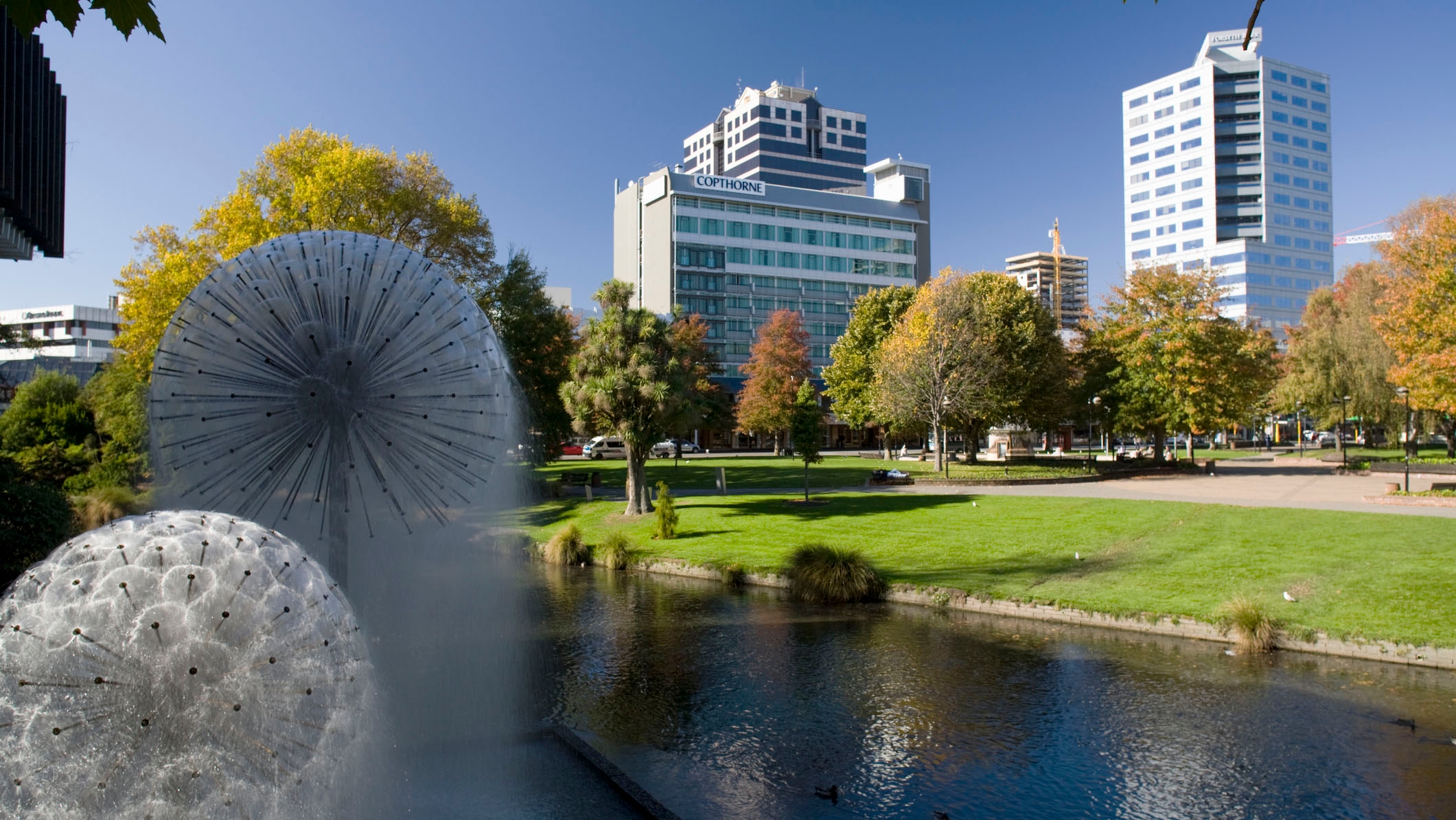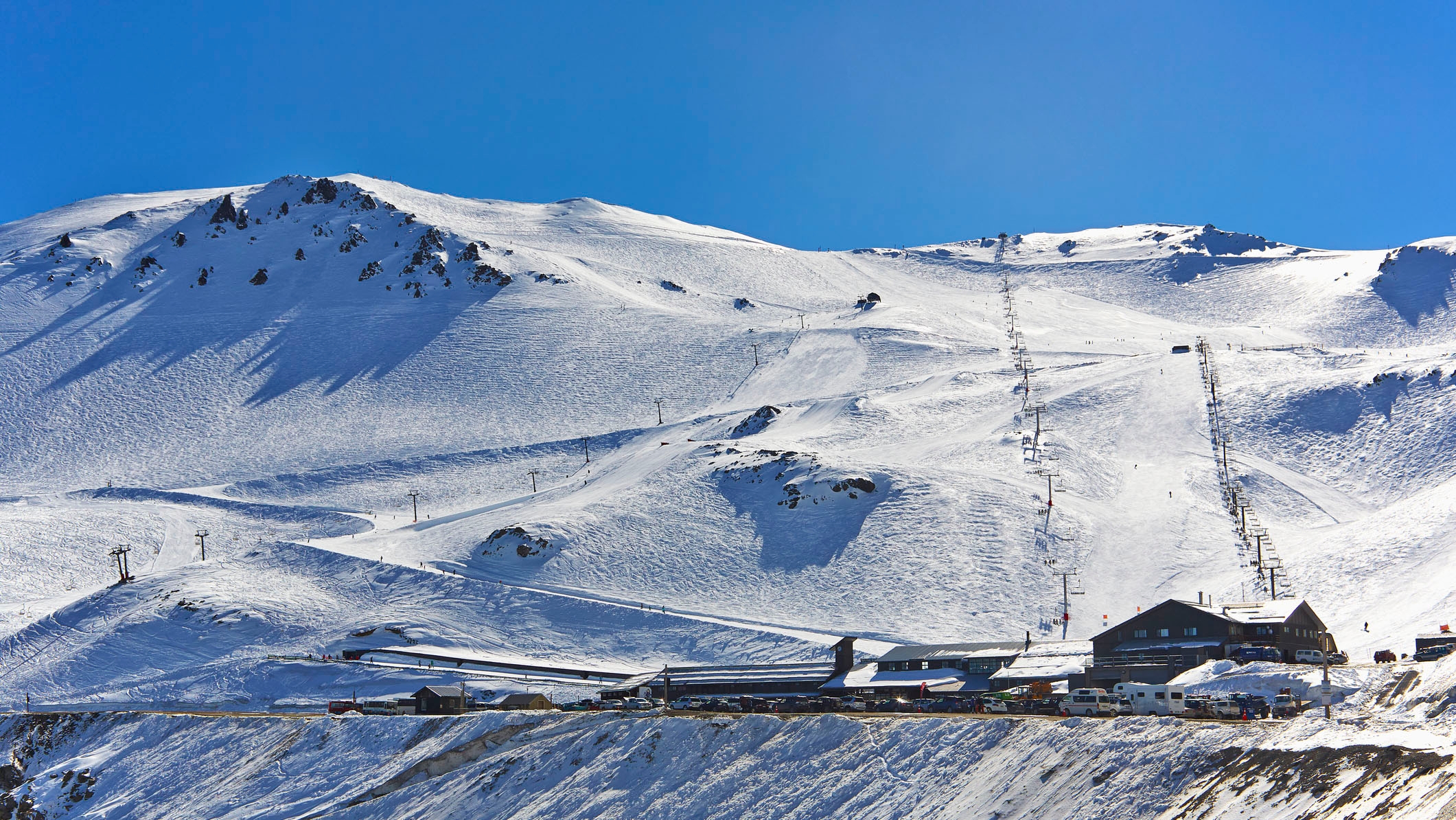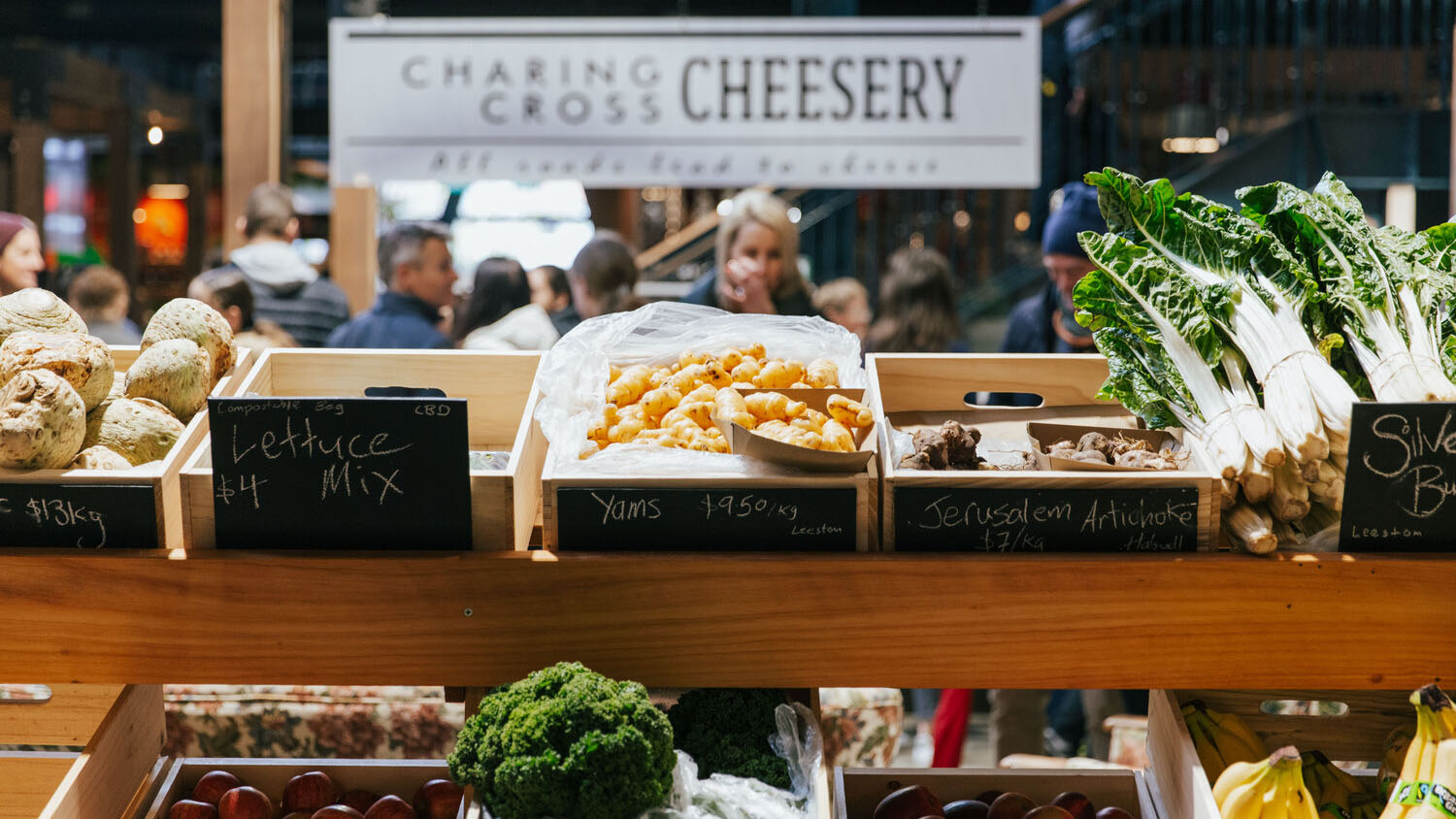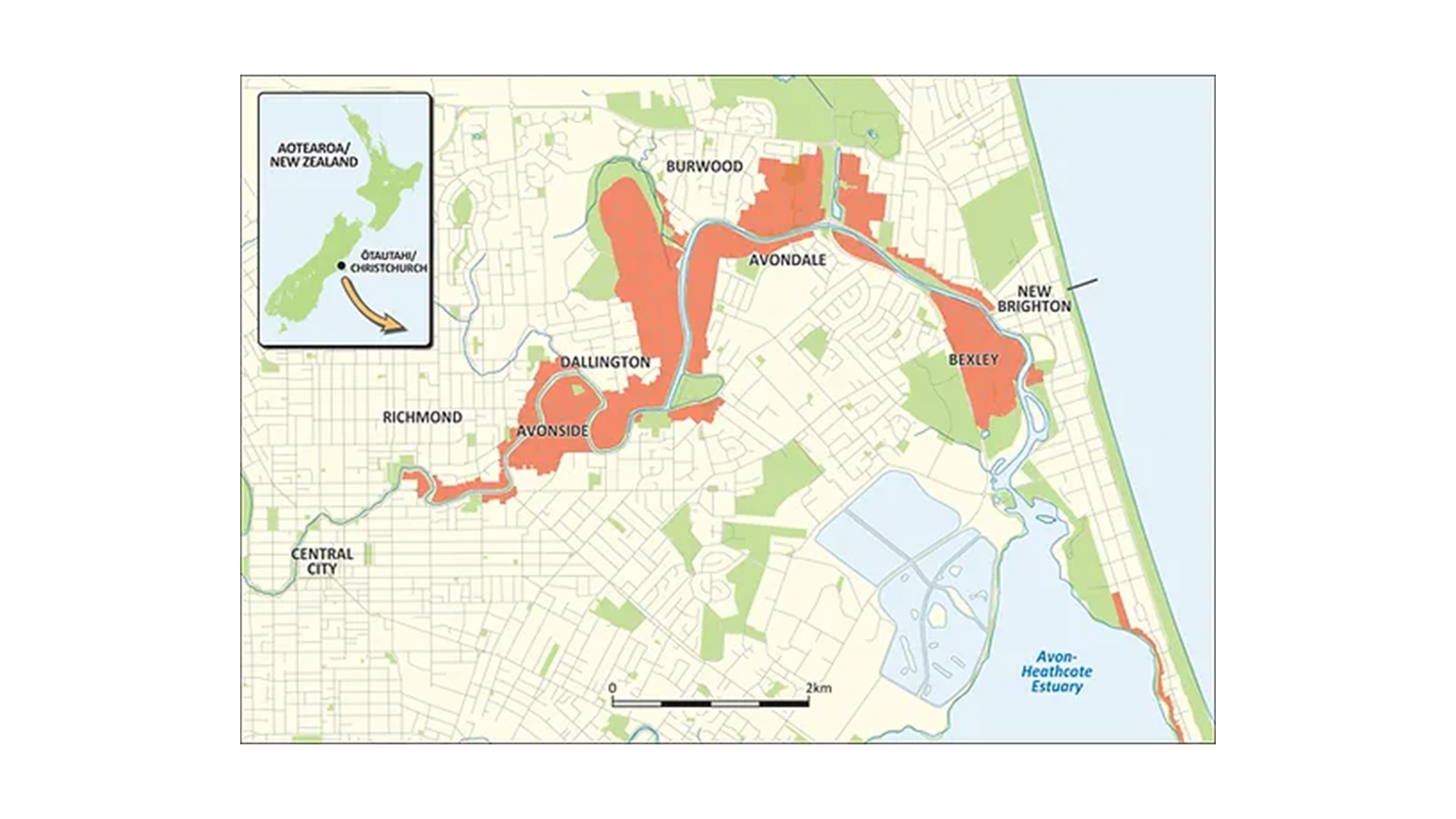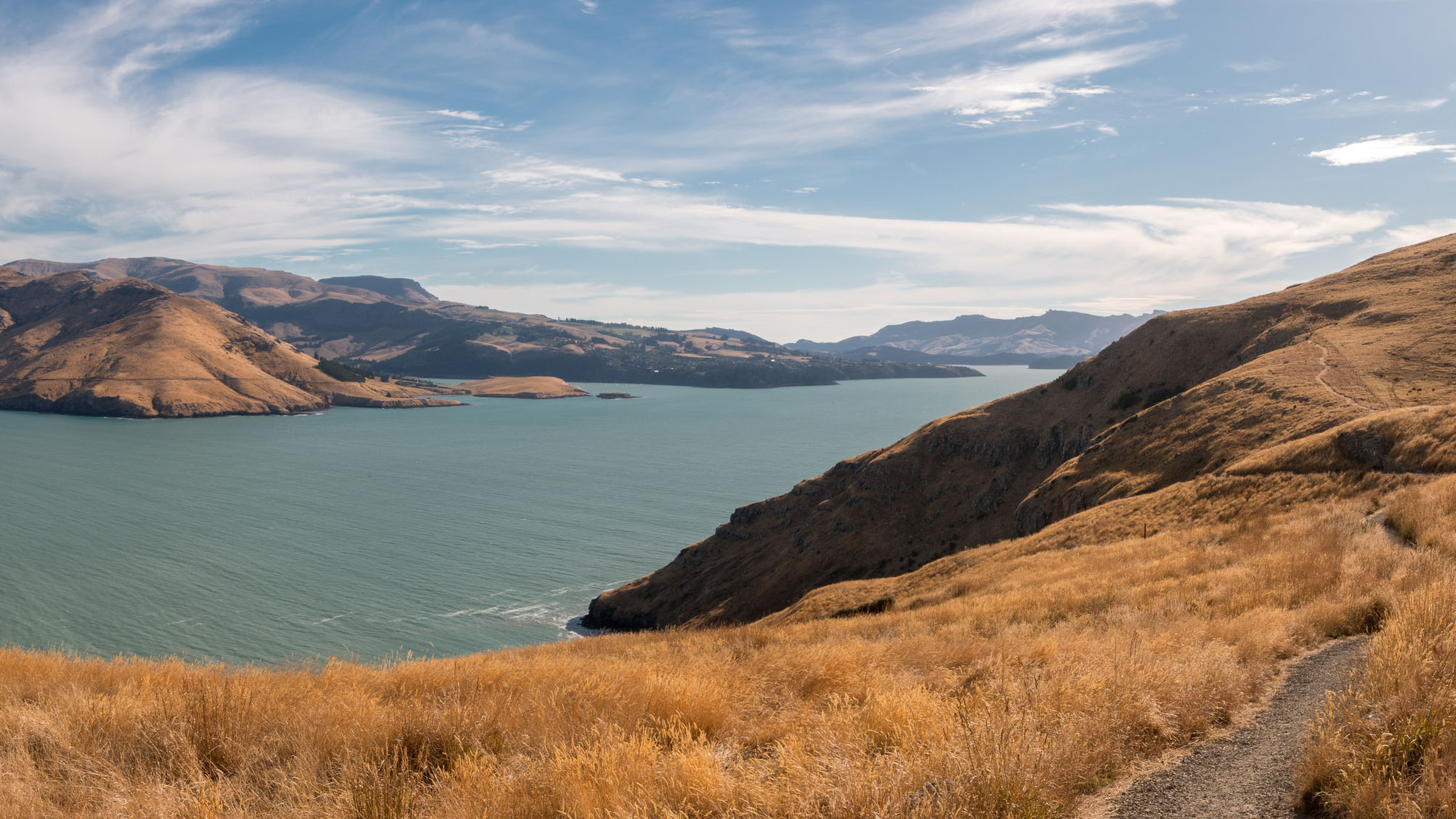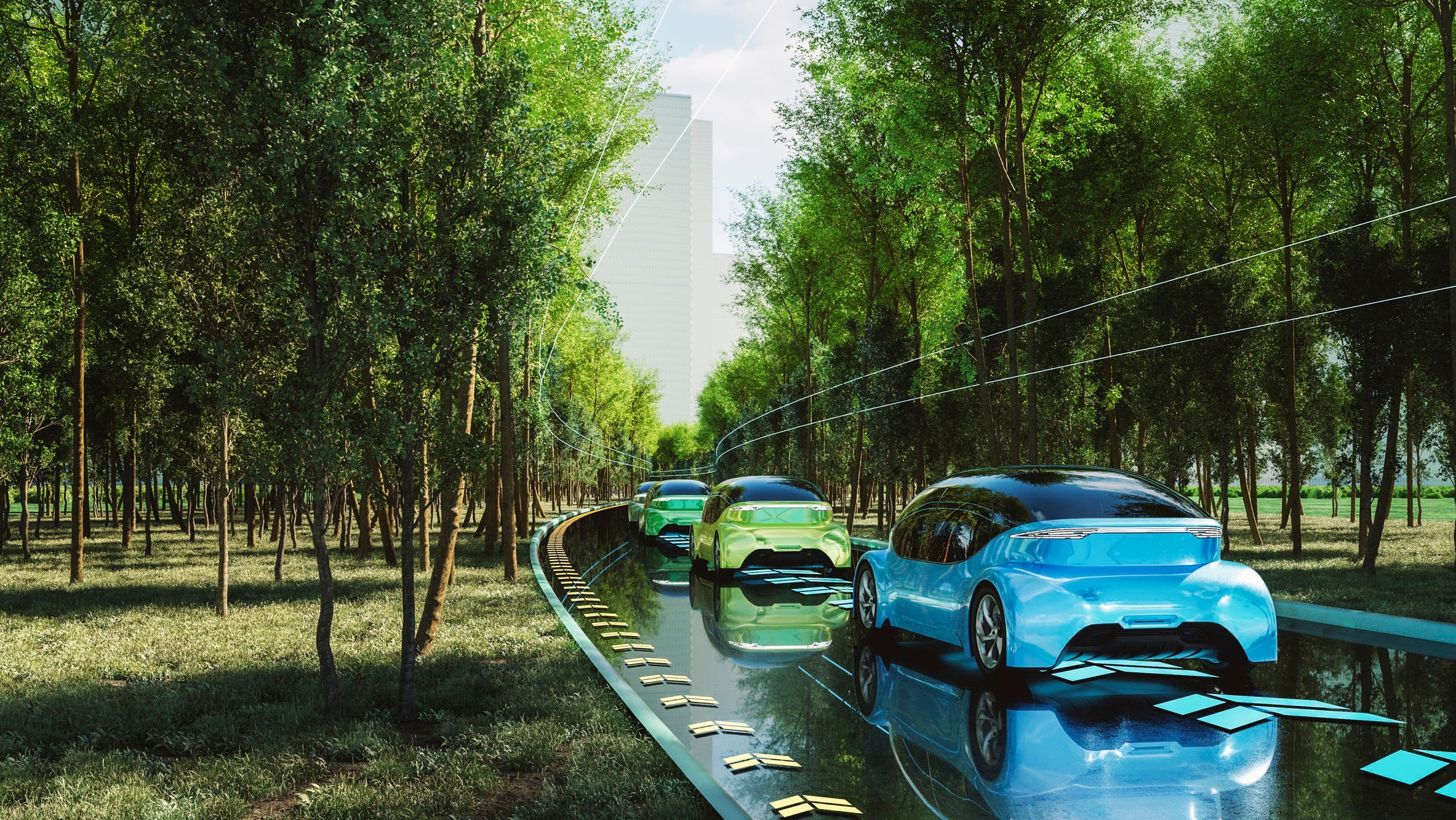Feature article
Christchurch as a city of the future
Big thinkers share how our recently transformed city is likely to see vast changes over the coming decades.
Cantabrians are rightly proud of Ōtautahi Christchurch’s rebuild since the earthquakes in 2010 and 2011– the city has new life with a number of beautiful buildings and spaces that have sprung up in the CBD. Christchurch is leading the way with the cycle revolution developing across the country as people try to use cars less. And its Red Zone which saw 600ha of riverside land subside in the 2011 earthquake, is an important prototype of what sea level rise might look like and how the community will respond.
Malcolm Johns, Chief Executive of Christchurch International Airport says in the last decade the city has been rebuilt to become the most modern city in New Zealand. It doesn’t have the infrastructure challenges of other cities after $65 billion was spent in the city post-earthquakes.
“While the earthquake was tragic, ultimately, it reset Christchurch to embrace digitisation and climate change,” adds Malcolm.
“The reality is, Christchurch is the best city in New Zealand to live the Kiwi dream. You can have your own house, work life balance, very good schooling, be connected to the rest of the world and do meaningful work,” he says.
When it comes to climate change, Christchurch is a flat city, and next to the ocean, so there’s no question that eastern suburbs will see managed intervention, and residents will have to come to terms with the fact some places today will not be liveable in 50 to 70 years time, he notes. At the same time, the city has a very strong balance sheet so it’s well placed to adapt, says Malcolm.
“The key is we’ve just learned how to manage massive structural change in the city and this experience is (in effect) a piece of intellectual property for Christchurch,” says the CEO. He expects Christchurch to intensify and build upwards, as other NZ cities will, and there’s land to the west that won’t be affected by sea level rise so it has options.
It's likely Christchurch will grow up rather than out - with more high rise complexes and green spaces.
Ōtautahi Christchurch could become a centre for learning and problem solving
There are definite attractions to Christchurch, the country’s second largest city, says CoreLogic’s chief property economist Kelvin Davidson, a Cantabrian. You can go skiing and swimming in the same day, and it has a strong economic base, a big IT industry, manufacturing and high tech businesses like Tate Communications.
A future Christchurch could become a centre for education and learning and grow significantly as a university town, says Mike Fisher, ChristchurchNZ’s Place & City Transformation Manager, the man behind the city’s popular Riverside Market.
The city could have special research expertise in health, film, gaming, tech and agri-tech, says Mike, who also lectures at Canterbury University. He would like to see Christchurch have a Research & Development “supercentre,” a meeting place for connection where firms with R & D departments, bring their talent together to solve big world problems.
“I think that’s the part of the future of working, that connection of ideas, working on challenges,” says Mike. He notes Canterbury University already has the HIT lab, a research centre where gamers work alongside physicists on solutions.
Christchurch has a range of recreational activities, such as mountains and beaches, right on its doorstep.
Brainstorming on ideas for a future Christchurch CBD
As for the CBD, the Riverside Market founder believes it will transition into an experience district.
“It will be these amazing public spaces, of food, culture, arts, sport, a very walkable city, and this incredible bubbling hub of experience,” predicts Mike. He envisages Barcelona-style four or five storey apartment buildings with communal open spaces to supplement people’s apartment living.
Landscape architect, Debbie Tikao, and a member of the Christchurch City Council’s urban design panel is one of many who is against the city expanding further out, “eating into landscapes.” Urban expansion doesn’t support community, says Debbie, who’d like to see a new urban form.
The biggest threat with climate change is finding a way to build our cities around the concept of food resources, water, gardens and orchards, she says. “If we revolve around food, it’s also what connects us, we’d have a much stronger community that’s more resilient against financial crisis,” says Debbie.
The city centre should have more people living in the central city and more multiple purpose buildings. The art is really important and exciting and this is where we get to showcase our stories and diverse culture,”says the urban design panellist.
Christchurch Riverside Markets are a vibrant part of the city, and we should expect to see more spaces that focus on food, culture and arts.
More students living in the city should be encouraged bringing a vibrancy to the area. “We need to be supporting our student culture and young professionals, making sure that places are affordable in the city.”
Younger residents will appreciate more of a co-housing type model, so that component has to be included in the design of apartments and townhouses, she adds. “It’s a smaller personal footprint but there are more shared facilities in the complex with more shared living spaces. It’s better for wellbeing, socially, and there are more places to talk about the problems of the world.”
Another member of the Christchurch City Council’s urban design panel, Heather Blewett, a registered architect and urban designer at Context Architects, remembers the blueprint of the city that the people of Christchurch contributed ideas to after the earthquakes.
“It was the people of Christchurch looking at those key connections and meeting places in the city and working around that,” she says. She’d like to see more ever-changing and responsive events and features in a future city, and people activating the city at all times of the day.
“It’s less about the specifics but opportunities to be together, for people to step away from their silos,” she says.
There’s a huge opportunity in Christchurch to come up with all types of housing that’s affordable and sustainable, says Heather. She’d like to see different modes of living introduced, different tenures including build-to-rent tenure.
Urban regeneration is about fulfilling a need. “It’s about allowing the built form to respond to the place, with innovative solutions, pulling up gardens to the rooftops, using the building as a living organism. Urban design is “allowing for” not dictating for things to happen, she says.
Ōtautahi Christchurch population growth and intensification in the suburbs
As Christchurch’s population grows in the coming decades, Planz Consultants senior planner Dean Chrystal predicts there’ll be an intensification of housing around Hagley Park, high rise apartments like around Hyde Park in London. “I think you’ll see intensity around key nodes, like the University of Canterbury, and major shopping centres,” he says.
There will be intensity and high rise living around Riccarton Mall, Hornby and Rolleston, around their town centres and Rangiora, with people able to walk or scooter everywhere, he predicts.
Hugh Nicholson, managing director of UrbanShift and former principal urban designer at Christchurch City Council, sees Christchurch decentralising, though keeping a vibrant city centre. “It will be a 15 minute city, where people live within 15 minutes of where they need to go,” he says.
Scooters are a great means of transport that will help reduce the number of cars in our cities.
“I’m not saying death to the city but there will be healthier and stronger centres throughout. It’s all relatively well mapped out in places like Riccarton, out towards Shirley, near supermarkets and malls,” he says.
The challenge for Christchurch is not to expand too much and become an LA, but to maintain areas of density. We want to densify in the city centre, and in transport corridors, explains Hugh.
Joanne Kelly, director of Pynenburg & Collins architects, thinks some inner city suburbs of Christchurch are ripe for densification, suburbs like Riccarton and Addington, those with semi- industrial areas.
“It’s time to start breaking them down and making them mixed use, building five or six storey apartment buildings with green spaces where people go to connect. Like in Europe, some spaces will be owner occupied, some social housing, it’s about getting that mix,” she says.
Sydenham has great potential for this approach, too, she says. It’s a 20 minute walk from the city, has offices and car yards and just needs more residential to add to the good retail in the area.
What houses will be built of in the Ōtautahi Christchurch of the future
And Ōtautahi Christchurch will have more sustainable housing, locally grown timber, for instance, predicts Hugh. “We’re growing the wood, processing it here, making things. To me that’s the future, that’s sustainable.”
The urban designer likes the three-storey terrace houses you see in Sydney. “Great terrace housing, that’s the future. It’s well-designed, the land is being subdivided in a way that supports the development, so you end up with a residential park in the middle, and a whole range of people can live there.”
Warren and Mahoney architect, Fiona Short, agrees Christchurch will have a lot more timber in buildings. They’ll be made of engineered timber and more high tech plant-based materials like hemp, wool, bamboo and straw, used more as raw materials to make advanced products, says the architect who specialises in sustainable design.
One Central is a new terrace-housing development in central Christchurch, designed by Warren & Mahoney.
“We will see buildings that open up when the climate is comfortable and engage with the environment and when conditions are more extreme, buildings will be smarter, we can close them down in a high performance way,” she adds.
CEO of Christchurch construction company, Naylor Love, Rick Herd predicts the densification of Christchurch city will be about adaptation and re-use, not demolition.
Buildings will be modular and prefabricated and building materials will be low carbon engineered timber, he predicts. There will be more use of technologies like 3D printing, starting to be used for cement plaster, for example, and as energy costs go up, the cost of solar panels will come down, he says.
Apartment buildings meanwhile will have their own grocery shop, he predicts, and then there will be urban gardens on the sides of buildings.
Christchurch and its early view of climate change
For any city in Aotearoa New Zealand, and any place in the world facing sea level rise, the work from the virtual community of the Ōtākaro Living laboratory in the 600 hectare Ōtākaro Avon River Corridor, will be very interesting to watch in the coming years.
In the earthquakes from 2010-2013, the river corridor was declared a Red Zone as the land subsided by up to 1.5 m. Over 5000 households living in the Ōtākaro Avon River Corridor in the city’s eastern suburbs were told their homes were unsuitable for housing and bought by the Crown.
Rob Kerr, who sits on the trust of The Living Laboratory, and who led the development of the Ōtākaro Avon River Corridor Regeneration Plan, explains the importance of this project. “When the earthquake struck Christchurch, this river corridor dropped by 1m to 1.5 m. If you turn that upside down, that’s the equivalent of a 1m 1.5 m sea level rise. So what we have is a 600 hectare prototype of what the rest of the world is facing over the next 50-100 years.”
The red zoned areas in the Ōtākaro Avon River Corridor are in red; green areas are pre-existing open space. Graphic by Blackant Mapping Solutions, image sourced from Ōtākaro Living Laboratory.
“So, it’s about how we use this prototype, this living example of what (is coming to) New Zealand and the rest of the world and learn from it, trial new ideas, build knowledge and expertise that’s useful.”
The question being asked right now is: what does a flood-tolerant, seismic tolerant community look like, says Rob. The river corridor regeneration might be an opportunity to try different ownership structures in these marginal areas with different physical builds. For example a tiny home village that’s relocatable with a leasehold ownership structure on the land.
And then there could be a plan for what next after that, an interim period, perhaps floating houses, amphibious houses that float when they need to float. Whatever the ideas are that succeed it will be a much more collaborative process than ever before, says the trustee.
“Living with water is a key part of what the future looks like, and that requires an acceptance that we don’t use every square metre and there’s a different ecology around us.”
Ōtautahi Christchurch to become New Zealand’s first carbon zero city?
Warren and Mahoney studio principal, Hayley Fisher, would love Ōtautahi Christchurch to be New Zealand’s first carbon zero city.
“I think if we turn into a carbon negative self-sustaining city we’ll be a beacon of the future and we’re going to attract a lot of companies with a similar mindset, technology and nutrition wanting to be here,” she says.
“We could create our own energy so we don’t have to rely on big infrastructure power networks to support the growth of our city. We could have streets with wind turbines and buildings with solar panel facades. You can get small wind turbines that clamp onto every lamp post, she says.
We should expect to see more renewable energy sources pop up around the city.
The residents of Christchurch will be creating part of the city’s energy in the future, she predicts. By 2050, people could have devices on their arms and the movement of residents moving around would power the system running the city.
The architect would like to see the “Garden City” label take on a new meaning. “Imagine a city where every park or green space was providing food, and that food is free,” she suggests. We could create eating pathways through the city. People can just grab an apple, these sorts of things aren’t rocket science, they’re within our grasp, says Hayley.
Warren and Mahoney architect and a leader in sustainable design, Fiona Short, says Christchurch has a unique opportunity to transform and demonstrate a new sustainable way of living, becoming the new Kiwi dream.
The architect would like to see Christchurch as the cycle capital of New Zealand and the world. It’s built for cycling, cycling and walking are the most enjoyable way to move around the city, she says.
“Buildings will be greener, more sustainable and more open to change as well as more resilient to severe weather events,” she says. These resilient aspects will allow residents to live in low cost buildings with energy generation food systems part of every building and community, and micro decentralised energy generation.
“Being more connected to where our food and energy comes from will bring us together more, relying on smaller communities,” says Fiona. She envisages five levels of living and five levels of food growing in a residential building.
When it comes to work, people will work in a more fluid manner and work at times from a third space, somewhere that’s away from work and home. It will be like a gym where you meet other people and gather and these will be included in residential buildings, she says.
Meanwhile, in parts of Christchurch that will be in retreat in the decades ahead thanks to sea level rise, she sees a new model of ownership in areas where Cantabrians will be finding new ways to occupy land.
In one of Christchurch’s most beautiful spots, Fiona says there will be more regenerative forest on Banks Peninsula which will be a great opportunity for carbon credits and income making it a global destination for eco-tourism.
AO Architecture’s Michael John would love to see the Port Hills return to native bush. “There are already walks up there and an adventure park, it’s been stripped nude for centuries,” he says.
Despite being the Garden City, Christchurch is lacking in trees. Places like the Port Hills could benefit from more trees and canopies.
“It’s quite interesting, we’re known as the Garden City but we have the least amount of tree canopies of the major cities. We just don’t have a lot of trees,” says the designer.
Mike likes the example of medieval villages in Italy where they build in a “consolidate location”, a town, and all around is beautiful farmland. “I’d like to see the same here, a defined built up area and then rural land. It’s important to save precious productive agricultural land from development,” he says.
What Christchurch City Council has planned for the future
So what’s being planned by the Christchurch city council in the decades ahead? Head of planning and consents, John Higgins says the Ōtautahi Christchurch Plan, looking at land use, transport and infrastructure planning will bring housing, business, environmental and community outcomes and “vitally” increase the city’s climate resilience and reduce green gas emissions.
Infrastructure planning enabling development and investment, is already being done in areas like Halswell where there is demand for housing, employment and services post the 2010-2011 earthquakes.
Christchurch is expecting a further 17cm to 23cm sea level rise by 2050 and 52cm to 1m sea level rise by 2100, according to projections from the Ministry for the Environment (MfE) with around 25,000 properties at risk of coastal flooding over the next 100 years. The council has established a Coastal Hazards Adaption Programme and an adaption planning programme. The first phase of engagement is starting with communities in the Whakaraupō Lyttelton-Mt Herbert area.
The city has forecasts in the Our Space 2018-2048 Strategy indicating that the population of Greater Christchurch by 2048 may be close to 742,000 in a high growth rate scenario. And for the city centre, it has the Central City Residential Programme which aims to increase the residential population of the central city from 6,000 in 2018 to 20,000 by 2028.
The Greater Christchurch Partnership is developing a spatial plan to consider how Greater Christchurch can cater for future projected growth and to future-proof the city’s urban area.
The Greater Christchurch Spatial Plan is to be delivered as part of the council’s commitment to the Urban Growth Partnership for Greater Christchurch - the Whakawhanake Kāinga Committee. This is a partnership between central government, mana whenua and local government setting the long-term direction for how Christchurch will grow. A key part of this is to plan modern and resilient infrastructure ahead of predicted population, says the council.
Transport plans for the future are still under discussion. The draft Christchurch Transport plan was released in August this year, its goals to produce a low carbon city and safe and liveable streets.
Transport possibilities for Ōtautahi Christchurch
Canterbury University Geography Professor, Simon Kingham a Chief Science Advisor for the Ministry of Transport, expects citizens of Ōtautahi Christchurch to be getting around in fleets of shared vehicles, self-driving vehicles and public transport in a future city.
This will be happening hand in hand with higher density living in the suburbs, similar to what can already be seen in European cities like Freiburg, he notes. People living in smaller villages, working from home and walking and cycling to most destinations.
Where Christchurch expands will depend on decisions yet to be made around the Mass Rapid Transport network for the city, says Simon. If it’s a rail based system then you’ll see increased density around rail stations. One suggestion is to go out to Rangiora, with stops in Belfast, also potentially to areas like Addington, where there could be higher density.
“It will be a case of where do we want the density and public transport to serve,” says the professor. If the city decides on light rail for MRT then suburbs like Sydenham could benefit, he says.
“We can’t keep sprawling, it’s not sustainable, and not good for health and well being, we’ll be living closer together,” he says.
Christchurch International Airport CEO Malcolm Johns believes that tech progress will mean micro network electric aircraft will be coming to the city in the not too distant future. These 12- seater planes will fly to regional nearby cities like Timaru every 20 minutes of every hour, at the cost of $35, he says.
Tech can decarbonise transport and revolutionise short distance journeys from Christchurch to Kaikōura, Methven, Hanmer Springs and Timaru, he says. “Suddenly, it becomes viable to have a public transport network in the air that will take transport off the roads.”
“When I say public transport people think of buses and trains. I don’t think buses and trains, I think electric aviation transport,” he says. Aviation will be fuelled by electric, hydrogen electric and standard sustainable aviation fuels, adds Malcolm who becomes CEO at Genesis Energy in March 2023.
Vehicles of the future will prioritise sustainability.
Christchurch-based Abley Transport director, Matthew Noon, says the future will see autonomous connected vehicles that talk to each other. These connected vehicles, trucks and cars, will travel close together and won’t park so there will be all this free-ed up space in the city. With a reduction in the road network, there will be a replanting and regreening of streetscapes, he predicts.
“It’s all about mobility as a service,” explains the Abley director.
“For a connected vehicle, you’ll just call up a vehicle suitable for me and a dog. If I want to go to a sports game with the family then a we’ll be a 5 person van load. I’m meeting mobility needs as I need them without a huge capital outlay,” says Matthew.
With fewer vehicles, there will be less need for road space, so roads themselves will be better for walking or cycling. If you’re living in an apartment, the kids can go and kick the ball out on the street, explains the transport consultant.
And cars won’t look like your standard Toyota. If you don’t need the engine you might need something the size of a phone box depending on how many people they’re carrying. Then there will be autonomous flying vehicles as personal taxis, he says. “You will call these four person taxis to go to Hanmer Springs, it’ll land on the roadway outside your house, or in the backyard,” he says.
With autonomous vehicles, they’ll remove the urban blight of traffic light after light, says Matthew. As you cross roads, vehicles will know you're there and speeds will be more appropriate, he explains.
Some out- of- the- box thinking from tech entrepreneurs
Christchurch has more than its fair share of entrepreneurial thinkers. One Cantabrian resident, Rollo Wenlock, currently working on Miro Rail, high speed battery electric next-generation railcars for the country’s rail network has a number of ideas for his city.
He can see a future where personal drones shoot up in the air, each drone would take one person and would operate like a small car. The entrepreneur is working on a solar-powered electric car, a small vehicle to take the kids to school in. You sit together like in a horse drawn cart, using remote controls as you go along.
He can envisage an Ōtautahi where the city residents create a harbour in the middle of Christchurch and turn it into a real port town.
“Let the water be closer to the city and have leisure connected to waterways, so it’s a holiday all the way,” suggests the Englishman who lived on canals growing up.
Rollo sees office space becoming a thing of the past, “a phase we’ve gone through for 200 years,” and a future where people return to live more in harmony with the planet as in pre-industrial times. “It will be more of a permaculture, where you grow things to help each other,” he says.
He believes houses will become smaller, it being more about the land, with houses up on stalks and the land underneath used to grow food for the household. Houses would be pre-fabricated and built with basic materials like laminated bamboo, wool, hemp, things that are much more readily able to be produced in Aotearoa, he suggests.
Ōtautahi Christchurch to be a city deferring to nature, according to futurist
And rather than fighting climate change, Christchurch Ōtautahi will see a reclamation of wetlands, and the city is already seeing some of that, some really significant work is being done, says Boma New Zealand CEO Kaila Colbin, serial entrepreneur and tech futurist.
Wetlands provide an absorption mechanism for sea level rise, flooding and encourage biodiversity, says the Climate Project Ambassador who recommends the documentary film, The Swamp, directed by Kathleen Gallagher.
“By the late 2000s, Christchurch will have a massive increase in wetlands area, we’ve embraced it and (have achieved) biodiversity.” The city becomes known for its handling of the situation, she suggests.
How will people work? By later this century, we’ll be looking at a point where virtual reality has disrupted reality, says the Boma CEO who helps support leaders to be brave about the future.
“Right now, I work from home predominantly, have an office I can go into and periodically go places, facilitating senior leaders where we’re all in the room,” she says.
In the time frame of later in the century, it will not be the same VR as we know it now, she forecasts. The experience will get to the point where we work from home, then when we want to gather for work purposes, when we want to unlock creativity, there’s virtually no difference in gathering in virtual space vs real space, she explains.
We're likely to see further shifts in the way people work. Will working in offices become a thing of the past?
“It’s not about avatars, there’s a sense of presence, our brains will be processing information no differently in virtual space,” says the tech entrepreneur.
“When we need to connect with people we’ll put on headsets but then when that’s done, we can turn it off and go and tend wetland,” says Kaila.
As people work from home more, we’ll have a real vested interest in making our homes a place that we want to be in, she says.
The entrepreneur’s hope is, as the city grows and adapts to climate change, its residents will embrace transit-oriented design and development. “You’ll have the transit hubs where you need them. And the city will only develop near transit hubs,” she says.
“Let’s build the city around transit points and have as many villages as possible so it’s as walkable and low carbon as possible. There’s a good chance we won’t be driving cars at that point, we’ll be reclaiming our cities and our villages for people and for nature,” says Kaila.
Other articles you might like

